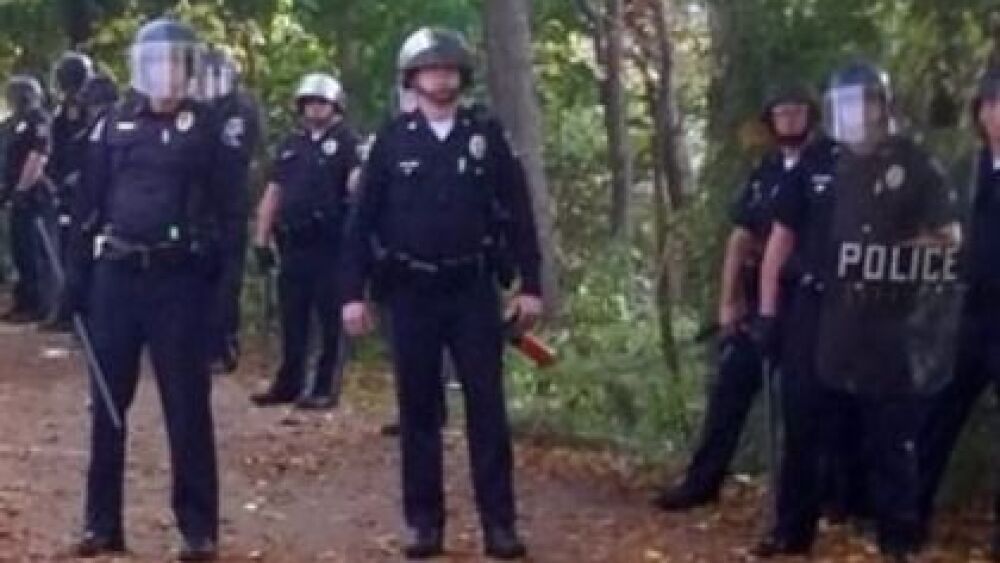Few forces are impacting law enforcement like video. Policing in the Video Age, P1’s yearlong special editorial focus on video in law enforcement, aims to address all facets of the topic with expanded analysis and reporting.
In the first installment of this four-part signature coverage effort, The Video Technologies Shaping Policing, we address how technologies including police drones, throwable robots, body-worn cameras, dash cams, and videos shot by the public are impacting law enforcement. Click here to learn more about the project.
In the age of the smartphone, amateur video capturing the mundane to the extraordinary is ubiquitous. The public is always recording, and as law enforcement agencies continue to take advantage of the many video technologies designed to aid in their investigations, harnessing the power of consumer technology is an important component of crime fighting that should not be overlooked.
Crowdsourcing video and other digital media for evidence in investigations has played a key role in solving cases and protecting the public. Police in Santa Barbara, California, used it to help identify suspects in the 2014 “Deltopia” riot. When chaos erupted after the 2011 Stanley Cup Playoffs, the Vancouver Police Department set up a dedicated email to gather evidence from bystanders. And, in arguably the most well-known example, crowdsourcing was an important asset in the Boston Marathon bombing investigation.
Chaos in Keene
In October 2014, mayhem erupted in Keene, New Hampshire during the city’s annual Pumpkin Festival. Over the course of the weekend, riot police were overwhelmed by violence as agitators threw bottles, started fires, and assaulted members of the public and police in a display that was unlike anything the department had ever seen.
“We had experience with riots – mainly following sporting events and things – but never of this magnitude and of this duration,” Keene Police Detective Joel Chidester told Police1.
In the wake of the violence, the department began receiving video clips and photos of the unrest from the public.
“It was almost a perfect storm. Because it was so close to a college campus, you had a generation that’s very familiar with recording and handling and processing and finally transmitting digital evidence,” Chidester said.
Despite the public’s good intentions, the volume of tips coming in clogged up the department’s servers. A lack of a centralized system to receive the information further complicated matters for investigators.
It’s the same issue that has plagued many police agencies who have put out a call for the public’s help. In the Boston Marathon bombing case, police received a mammoth volume of crowdsourced media in the days following the attack – over 13,000 videos and 120,000 photos from the scene overwhelmed those working to bring the Tsarnaev brothers to justice.
Information overload
During disturbances on a massive scale, enlisting the community’s digital eyes can be a vital component to solving a case. But police departments need to mitigate the difficulty in managing a flood of evidence in cases where possibly hundreds or thousands of people have documented the scene.
In the Keene case, police found a solution in the early days of the investigation: LEEDIR, a cloud-based digital information repository born out of the lessons learned in the Boston Marathon bombing case.
“One of the main concerns is capturing this media while it’s there – before people delete it off their phones, before things expire,” Chidester said. “That’s where the LEEDIR program really stood out – it gave us the ability to very quickly issue a release to the public to upload data and evidence. In many of these cases, these were felony level offenses – the statute of limitations would let us prosecute them for years to follow. It relives some of that time pressure – once you have this evidence captured and secured, then you can go back and start building cases in the days or weeks to follow.”
Scott Edson, special operations division chief at the Los Angeles County Sheriff’s Department, developed LEEDIR as a way for law enforcement agencies to get the storage capacity and secure portal they often don’t have during a major emergency. It’s one of multiple solutions investigators can use to collect digital media from many disparate devices into one streamlined tool.
“Everyone’s heard ‘see something, say something.’ I think crowdsourcing takes it to the next level, which is ‘see something, say something, send something,’” Edson said. “Crowdsourcing is a great solution – especially when the community is outraged at what’s taking place, like in Boston. They want to get involved and find these bad guys as badly as anybody else. It helps get us to the right place, looking for the right people, and if we don’t have community involvement, with an easy mechanism to get us the information, it’s going to make our job more difficult.”
In Keene, crowdsourced evidence led to 25 of the over 100 arrests made in the aftermath of the riots.
“Really the only way for us to start gathering post-incident evidence and building post-incident cases, is going to be through digital media and other eyewitness-type accounts. You can only make so many arrests when an event like this is occurring,” Chidester said. “It invokes a partnership with the community in terms of solving significant crimes. Some of the eyewitness photographs and videos – of the destruction of property, assaults – we would never have been able to obtain if they had not been brought forward by the public and turned over to us through a crowdsourced platform.”
3 key considerations
Although crowdsourcing may not be an investigative tactic used on a regular basis, it is wise for police agencies to consider this option before it is needed. Here are three key things to keep in mind:
1. Have a plan in place.
Start researching the tools available to your agency if you were to call on the public for submission of evidence. You will need to decide ahead of time where you’re directing the community to upload their material. While something as simple as a dedicated email address is an option, a digital evidence solution is ideal (a secure portal to submit evidence, cloud storage to avoid overwhelming your servers, and - as a plus - any sort of automated data categorization/analysis). Consider the personnel resources and capability of your agency to sort through what may be vast amounts of digital evidence. Coordinate with your city leaders on how best to get the word out to the public that you’re looking for their help in a case.
Although Keene declined to hold a Pumpkin Fest in the year following the riot due to concerns that an “anniversary effect” could have sparked more unrest, the city was on guard.
“We were prepared with the platform and our press releases, so if that had happened, it would have been a much faster process to implement,” Chidester said. “That would have helped us in terms of streamlining our collection of the media. If we had something like this ready to go from the beginning, we would have been able to roll this out pretty seamlessly, almost concurrent with the event unfolding.”
2. Get the public on your side.
Police departments need no reminder that the public has become increasingly sensitive to issues of privacy and transparency. It’s important to keep the public informed of the benefits that come with this type of information gathering.
“In America, we have to look at the balance between privacy and protection and make sure we’re not becoming a society so concerned about privacy that we forget that there are legal ways to obtain information that isn’t violating privacy rights,” Edson said.
He suggests police departments relay this message to the communities they serve: “Don’t always assume that a technology is violating your privacy rights; give us an opportunity to show you that this technology is being used for good – to give you a better quality of life.”
As your agency develops a plan, build awareness in your community and ensure that you have some form of participation from them in terms of policies and procedures. This enables the public to know your intentions up front so their privacy concerns are alleviated.
3. Consider keeping a portal on 24/7.
Crowdsourcing doesn’t have to be reserved only for known events or large-scale incidents. The LASD maintains Digital Witness, a secure portal on their website, which is open at all times. Similar to a tip line, it’s a way for the public to send unprompted videos or photos of something they deem suspicious.
“We found that just by leaving the platform active, we’ve received tips. It’s been instrumental in providing us information on some crime areas that maybe we need to pay a little more attention to,” Edson said.
A powerful tool
Video is everywhere, and taking advantage of the public’s penchant for filming and willingness to help solve crimes in their community can be an essential tactic in law enforcement investigations. By planning ahead, fostering awareness and collaboration with the public, and considering a permanent evidence collection platform, your department will have a valuable new tool in your investigative arsenal.





